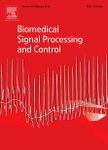版权所有:内蒙古大学图书馆 技术提供:维普资讯• 智图
内蒙古自治区呼和浩特市赛罕区大学西街235号 邮编: 010021

作者机构:Soochow Univ Sch Elect & Informat Engn Suzhou 215006 Jiangsu Peoples R China Cent South Univ Hunan Childrens Hosp Affiliated Childrens Hosp Xiangya Sch MedDept Cardiol Changsha 410007 Peoples R China Zhejiang Univ Huzhou Inst Ctr Intelligent Acoust & Signal Proc Huzhou 313000 Peoples R China Suzhou Melodicare Med Technol Co Ltd Suzhou 215151 Peoples R China Jiangsu AIMed Med Technol Co Ltd Suzhou 215151 Peoples R China
出 版 物:《BIOMEDICAL SIGNAL PROCESSING AND CONTROL》 (Biomed. Signal Process. Control)
年 卷 期:2025年第103卷
核心收录:
学科分类:0831[工学-生物医学工程(可授工学、理学、医学学位)] 10[医学]
基 金:Huzhou Science and Technology Project [2022GZ46] Suzhou Science and Technology Project [SYS2019029, SKYD2022096]
主 题:Congenital heart diseases (CHDs) Phonocardiogram (PCG) Envelogram Deep neural network classifier Pediatric CHDs screening system
摘 要:With a global morbidity rate of 8.224 parts per thousand, congenital heart diseases (CHDs) are cardiovascular abnormalities progressing since fetal development. Many CHD patients remain undiagnosed, due to lack of cardiologists, echocardiograph devices and skilled operators, especially in remote regions of developing countries. Artificial intelligence assisted phonocardiogram (PCG) auscultation is promising for rapid and low-cost cardiac abnormality detection. However, a practical pediatric CHDs screening system was hindered by the lack of labeled PCG database recorded in real CHDs screening scenarios and the prerequisite of hand-sorting PCG fragments. A Largescale Congenital Heart diseases Screening Tool, named LaCHeST, is developed in this study to achieve userintervention-free online pediatric CHDs screening. In the LaCHeST, similarity among low-frequency PCG envelogram pieces is exploited to automatically extract PCG fragments and reject trajectories. For efficient feature extraction and segment-wise classification, a dual-path complementary neural network (DPC-Net) is established, with exemption from cardiac cycle segmentation, whose rationality was verified by occlusion maps. The algorithms in LaCHeST were developed based on our PCG database collected from 14,332 pediatric subjects, in a voluntary pediatric CHDs screening task in Shaoyang, Hunan, China, implemented by Hunan Children s Hospital. The LaCHeST achieved high agreement with expert interpretations (Kappa = 0.87), and outperformed the state-of-the-art methods with average Specificity = 99.6 %, Accuracy = 99.23 %, Recall = 87.43 %, and F1score = 88 % in segment-wise classification. Subject-wise classification performance was evaluated in a separate pediatric CHDs screening task involving 786 pediatric subjects, and achieved Specificity = 99.22 % and Recall = 100 %.